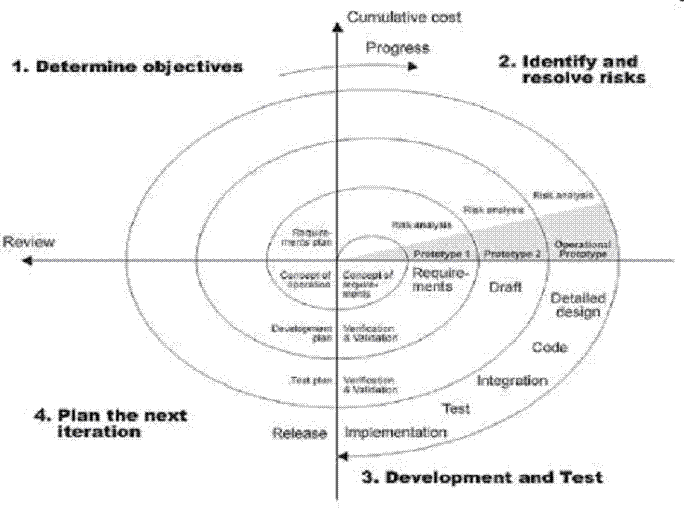Explain the Spiral Model
The general idea behind Spiral Model is that you don’t define everything in detail at the very beginning. You start small, define your important features, try them out, get feedback from your customers, and then move on to the next level. You repeat this until you have the final product. Each time around the Spiral involves 6 steps:

1. Determine objectives, alternatives and constraints.
2. Identify and resolve risks.
3. Evaluate alternatives.
4. Develop and test the current level.
5. Plan the next level.
6. Decide on the approach for the next level.
In this model, s/w tester gets a chance to influence the product early by being involved in the preliminary design phases. He can see where the project has come from and where is it going. Also, the cost of finding problems is low since they are found early.
The design and prototyping-in-stages are combined, in an effort to obtain the advantages of top-down and bottom-up concepts. It is a SDM (System Development Method) that combines the features of the prototyping model and the water fall model. The intention of spiral model is to deal with large, expensive and complicated projects.
The spiral model follows creation of a series of prototypes for refining the understanding of the requirements. The kind of approach is best suited to projects that are not at all clearly defined and a clear solution is yet to be arrived at. This model provides an opportunity to build various prototypes to understand the problem better and slowly arrive at a solution using the prototypes iteratively. The project starts with prototypes and ends with prototypes being developed into fully functional systems. It allows for a lot of flexibility from a customer and changing requirements perspective.